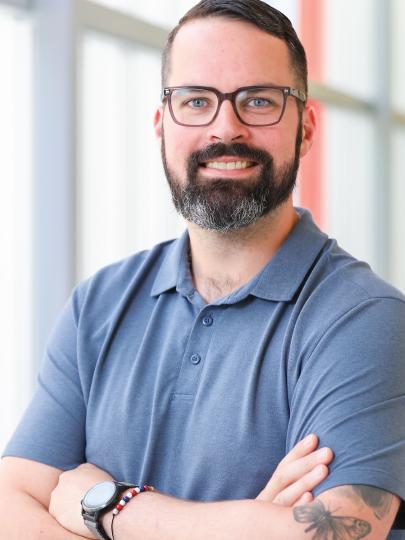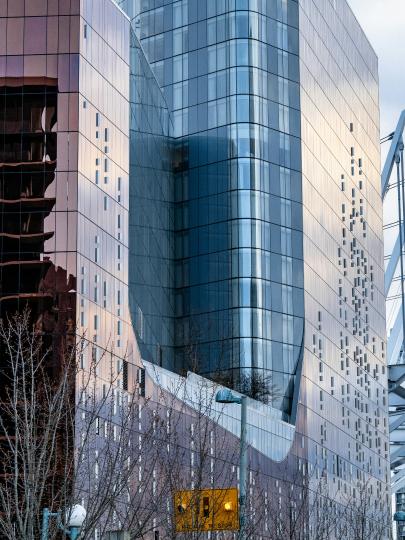Redefining Justice
On June 15, after the final game of the Stanley Cup playoffs, Vancouver erupted into a full-fledged riot. From burning cars and fighting in the street to opportunistic looting, the rioters seemed to show rampant disregard for societal conventions. It was a wake-up call for local residents, who were left with a trail of destruction along with a pervasive sense of intimidation and outrage. The riots – or more specifically the rioters – have lingered in the news and, as charges start to be laid, opinions differ on what should happen to those found guilty of riot-related crime. Some angry critics are keen to publicly name, shame, and punish through the traditional legal system, while others favour an alternative approach that might prove more constructive.
In response to the outcry after the riots, the Solicitor General’s office, City of Vancouver, and Vancouver Police Department jointly commissioned an independent review to examine what went wrong. The resulting report, The Night the City Became a Stadium, included a recommendation for a process known as restorative justice for riot-related offences. In order for the punishment to fit the crime, it suggested a special community court to consider individual motives, distinguishing remorseful first-time offenders from career criminals. Ideally, restorative justice would reintegrate riot offenders through a process that would teach them to recognize their mistakes, accept responsibility, and make positive reparation to the community.
UBC social work professor Frank Tester favours restorative justice over the adversarial legal system, with its complex definitions and argumentative style. Not only would the riot’s massive scale clog the conventional court system for years, but any underlying issues would also go unaddressed. “We won’t have learned much. The rioters won’t have learned much – if anything,” says Tester. “Some young people could have their lives ruined by having a record. Then we will pick up the social costs for the decades they are unemployed and frustrated in their lives and relationships. What kind of justice is that?” For years, Tester chaired Vancouver’s Family Court Youth Justice Committee, a civic group that reports annually to the Attorney General and Vancouver City Council. With a mandate to use community resources for children and family matters, the committee established the Vancouver Association for Restorative Justice to promote use of the process. The VARJ submitted a document outlining its recommendations to the authors of the riot report.
In order for the punishment to fit the crime, the report suggested a special community court to consider individual motives, distinguishing remorseful first-time offenders from career criminals.
Through restorative justice, the people directly involved in or affected by a crime, plus other community members, become part of an individualized and hands-on process intended to bridge misunderstanding and dispute. Offenders and the people impacted by their crime communicate directly, something Tester says can be a powerful and healing experience for victims. He stresses that the process does not let offenders off the hook; confronting the consequences of their actions and facing their victims is difficult and intense. “I have seen offenders break down and, for the first time in their lives, come to grips with their own history, behaviour and what they have done to others. This is anything but soft justice. It is a very tough experience to go through.” Offenders also have to make amends in a way deemed appropriate by the community. “The idea is to restore the person to his or her community,” says Tester. “The idea is to heal wounds, not leave them open and festering. The idea is to have people better understand their own behaviour and gain insight into the circumstances that contributed to it. Through restorative justice, people learn something.”
Tester’s travels and work around the globe have strengthened his belief in restorative justice and its application in vastly different settings. From dealing with street youth in Hamilton, Ontario, to former child soldiers in Mozambique, the technique has been used to facilitate social reintegration and healing. The techniques can be successful even for serious crimes. “At the same time, some offenders likely should go to jail,” observes Tester. “But I would want to be convinced first that no other means will do anything to change that person’s behaviour and that therefore, for the sake of the safety of all of us, jail is the appropriate place.”
Restorative processes can heal broken communities like the ones Tester works with in Nunavut. In fact, the approach shares key characteristics with traditional Aboriginal practices. In modern Nunavut, offenders – particularly youth – are sent away to camps where they must learn Arctic survival skills. The separation is supplemented by dialogue aimed at understanding how their behaviour affects others.
“Some young people could have their lives ruined by having a record. Then we will pick up the social costs… What kind of justice is that?”
Tester works in Arviat, a remote community formerly known as Eskimo Point on the western shore of Hudson Bay. Originally a Hudson’s Bay Company post with several religious missions, Arviat grew with the burgeoning white fox trade in the early 1900s. After World War II, the fur trade collapsed and the federal government began paying family allowances, holding Inuit in place just when living off the land became more difficult. In the late 1940s, there was major starvation in the interior of the Keewatin Region. In 1957, the government moved Inuit living at Ennadai Lake to new hunting grounds near Henik Lake, but this proved disastrous and more Inuit starved over the winter of 1957-58. Survivors were evacuated to Arviat, where many contracted tuberculosis. Farley Mowat’s books, People of the Deer and The Desperate People, documented the devastating effects of relocation. The rapid social change profoundly affected physical and mental health, social relationships, and culture. Steeped in new influences through residential schools, and then television and the internet, younger generations have often drifted away from traditional ways and lost their Inuit identity. The bitter result is a community struggling with many social problems, including addiction, family violence, abuse, and youth suicide.
“The difficulties that many Nunavummiut face today have a lot to do with the history of colonization,” says Tester, who won the Gustavus Myers Award for his contribution to the study of human rights in North America. “Colonization is about the use and abuse of power. If you have been demeaned, put down, degraded, portrayed as stupid, primitive and pagan, it is bound to [negatively affect] self-esteem – individually and collectively.” He points to the problems faced by Inuit youth, who have one of the highest suicide rates in the world. “Without a grounding in their history and culture, Inuit youth are lost and vulnerable to all the conflicting and often destructive messages beamed at them from elsewhere.”
To help heal the rifts, Tester developed the Nanisiniq Arviat History Project, bringing together Inuit youth and elders to rediscover and document their history and culture. For phase one last year, a group of Arviat youth visited Vancouver. At UBC they worked with Tester’s archival collection of 11,000 documents detailing the social history of the eastern Arctic – the largest of its kind in the world outside of the government and church archives where the records were found. The youth looked at Arviat’s history to trace what happened to their elders and community. Phase two involves using technology, including filmmaking and interactive media, to document the process as the youth re-learn Arctic survival skills from their elders. In December, they are accompanying Tester to Durban, South Africa, to participate in the COP17 conference on climate change, bringing what they have learned from their elders to bear on the issue.
The resurgence of traditional skills and values allows Arviat youth to reconnect with their own history from an Inuit perspective. Working closely with community elders brings the generations back together. The principle is known as Inuit Qaujimajatuqangit (IQ): rebuilding family ties, intergenerational relationships, respect, community support, adaptability, resilience, and strength. It is a thoroughly restorative approach based on individual and community engagement, dialogue, and reparation. Hopefully, their journey of discovery will provide the impetus to move forward into the future, combining old and new ways.
“Without a grounding in their history and culture, Inuit youth are lost and vulnerable to all the conflicting and often destructive messages beamed at them from elsewhere.”
The lessons learned through restorative processes can be applied even to a modern multicultural mosaic like Vancouver. Community-building should trump retribution. The current legal system focuses on punishing offenders with little view to true rehabilitation. Recognition, forgiveness, and reparation can restore strained relationships and hold a community together after mistakes are made. Compare that with the punitive approach, which marginalizes offenders, fractures their social bonds, and creates disenfranchisement. The resulting effects can be devastating for small remote communities, but perhaps larger societies are not immune from the repercussions.
Both the federal and provincial governments have historically promoted restorative justice as a viable alternative to the current legal system. Evidence shows that reoffending rates drop after participation in restorative justice programs. From Ucluelet to Williams Lake, communities across British Columbia are holding training sessions for restorative justice practitioners and other organizations, preparing them to address local problems, conflicts, and issues. Perhaps the same approach could bring closure to the issues raised by Vancouver’s Stanley Cup riot, moving past mindless destruction to mend social relationships and bring the community closer together.

































